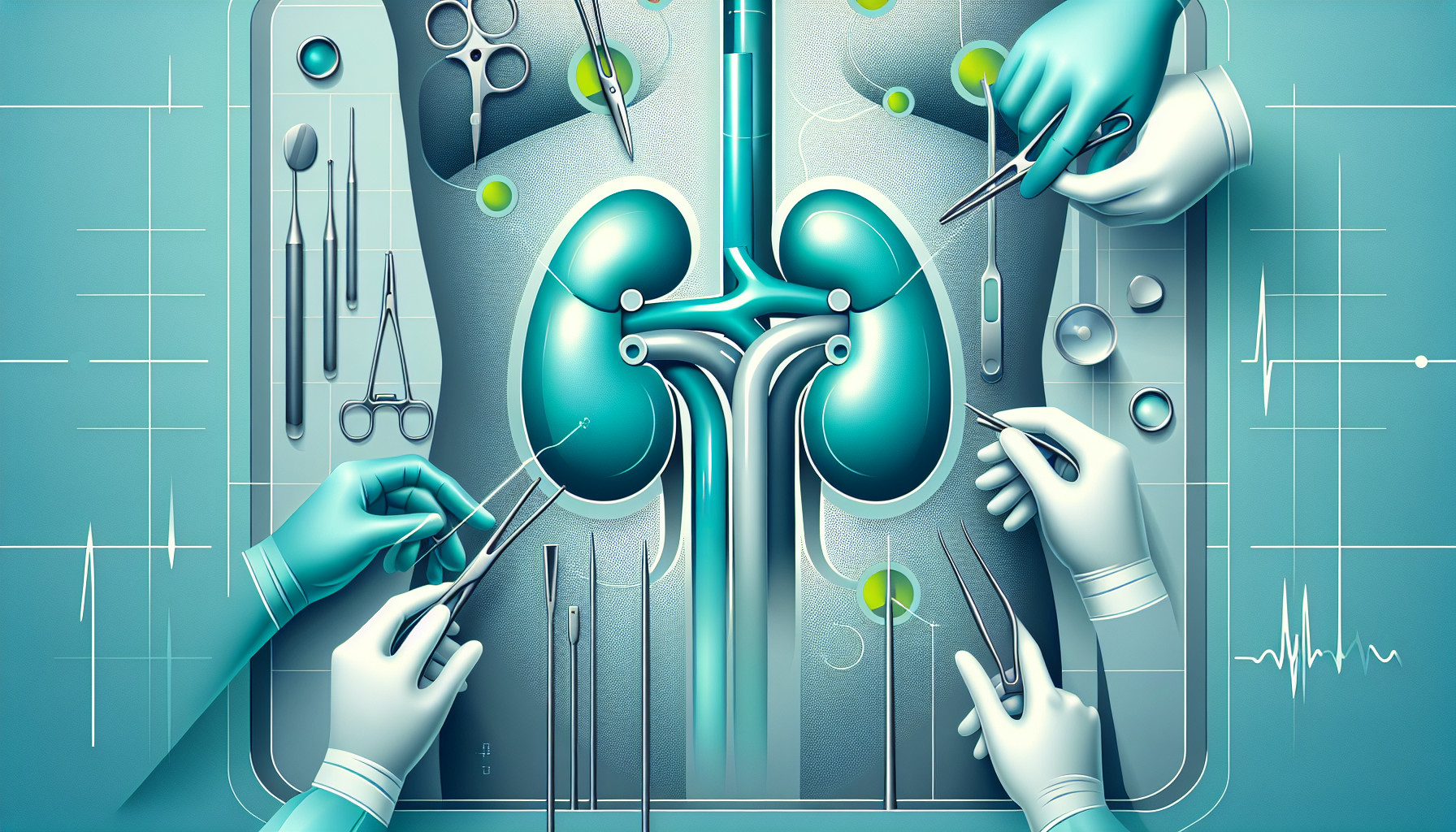Our Summary
This research paper is a review of studies on robot-assisted kidney transplants, a newer and less invasive method of performing kidney transplants. The researchers found that there was not enough clear information about how patients were chosen for these transplants in the studies they reviewed. This lack of information makes it difficult to understand how safe this method is and what the outcomes are. The review also found that the majority of patients who had robot-assisted kidney transplants received kidneys from living donors. The researchers recommend that international guidelines for reporting data on such transplants should be established and that larger trials, which clearly report patient characteristics, are needed to better understand how patients are selected, how safe the procedure is, and what the outcomes are for both patients who receive kidneys from living donors and those who receive kidneys from deceased donors.
FAQs
- What is robot-assisted kidney transplant?
- What kind of data or information is currently lacking in studies on robot-assisted kidney transplants?
- Why is there a need for international guidelines for reporting data on robot-assisted kidney transplants?
Doctor’s Tip
One helpful tip a doctor might tell a patient about kidney transplant is to follow a strict medication regimen after the transplant to prevent rejection of the new kidney. It is important to take immunosuppressant medications as prescribed and to attend all follow-up appointments with your healthcare team to monitor your kidney function and overall health.
Suitable For
Patients who are typically recommended for kidney transplant are those with end-stage renal disease (ESRD) who have exhausted all other treatment options, such as dialysis. Patients must also meet certain criteria, including being in good overall health, being able to tolerate the surgery and recovery process, having a life expectancy of at least five years with a transplant, and having a support system in place to help with the post-transplant care.
In addition, patients must also undergo a thorough evaluation to determine if they are a suitable candidate for a kidney transplant. This evaluation includes assessing the patient’s medical history, current health status, and any potential risks or complications that may arise from the transplant surgery. Patients may also undergo psychological evaluations to ensure they are mentally prepared for the transplant process.
Patients who are considered for kidney transplant may also need to have a compatible donor lined up, either from a living donor or a deceased donor. Living donors are typically preferred, as they provide the best outcomes for the recipient and have a lower risk of organ rejection.
Overall, patients who are recommended for kidney transplant are those who have ESRD, are in good overall health, have a suitable donor, and are willing and able to commit to the post-transplant care and monitoring process.
Timeline
Before kidney transplant:
- Patient is diagnosed with end-stage renal disease and is evaluated by a transplant team to determine if they are a suitable candidate for a kidney transplant.
- Patient undergoes extensive medical and psychological evaluations to assess their overall health and compatibility for a transplant.
- Patient is placed on the national transplant waiting list and waits for a suitable donor kidney to become available.
- If a living donor is identified, the transplant surgery can be scheduled at a convenient time for both the donor and recipient.
After kidney transplant:
- Patient undergoes the kidney transplant surgery, which typically takes several hours.
- Patient is closely monitored in the hospital for complications and to ensure the new kidney is functioning properly.
- Patient is discharged from the hospital and continues to be monitored closely by the transplant team through regular follow-up appointments.
- Patient must take immunosuppressant medications for the rest of their life to prevent rejection of the new kidney.
- Patient must make lifestyle changes, such as following a strict diet and avoiding certain medications, to protect the new kidney.
- Patient may experience complications or rejection episodes that require additional medical treatment.
- Over time, the patient’s kidney function and overall health are monitored to ensure the success of the transplant.
What to Ask Your Doctor
- What are the benefits of robot-assisted kidney transplant compared to traditional kidney transplant surgery?
- What are the potential risks and complications associated with robot-assisted kidney transplant?
- How is a patient selected for a robot-assisted kidney transplant? What criteria are used to determine eligibility?
- How many robot-assisted kidney transplants has the doctor performed, and what is their success rate?
- What is the recovery process like for a robot-assisted kidney transplant compared to traditional surgery?
- Will the patient need to take immunosuppressant medication after the transplant, and what are the potential side effects of these medications?
- How long can a patient expect the transplanted kidney to last, and what factors can affect the longevity of the transplant?
- What follow-up care will be needed after the transplant, and how often will the patient need to have check-ups with their doctor?
- What is the likelihood of rejection of the transplanted kidney, and what steps can be taken to minimize this risk?
- Are there any lifestyle changes or dietary restrictions that the patient will need to follow after the transplant?
Reference
Authors: Malinzak L, Gartrelle K, Sragi Z, Segal A, Prashar R, Jesse MT. Journal: J Robot Surg. 2024 Jun 4;18(1):239. doi: 10.1007/s11701-024-01927-5. PMID: 38833043
